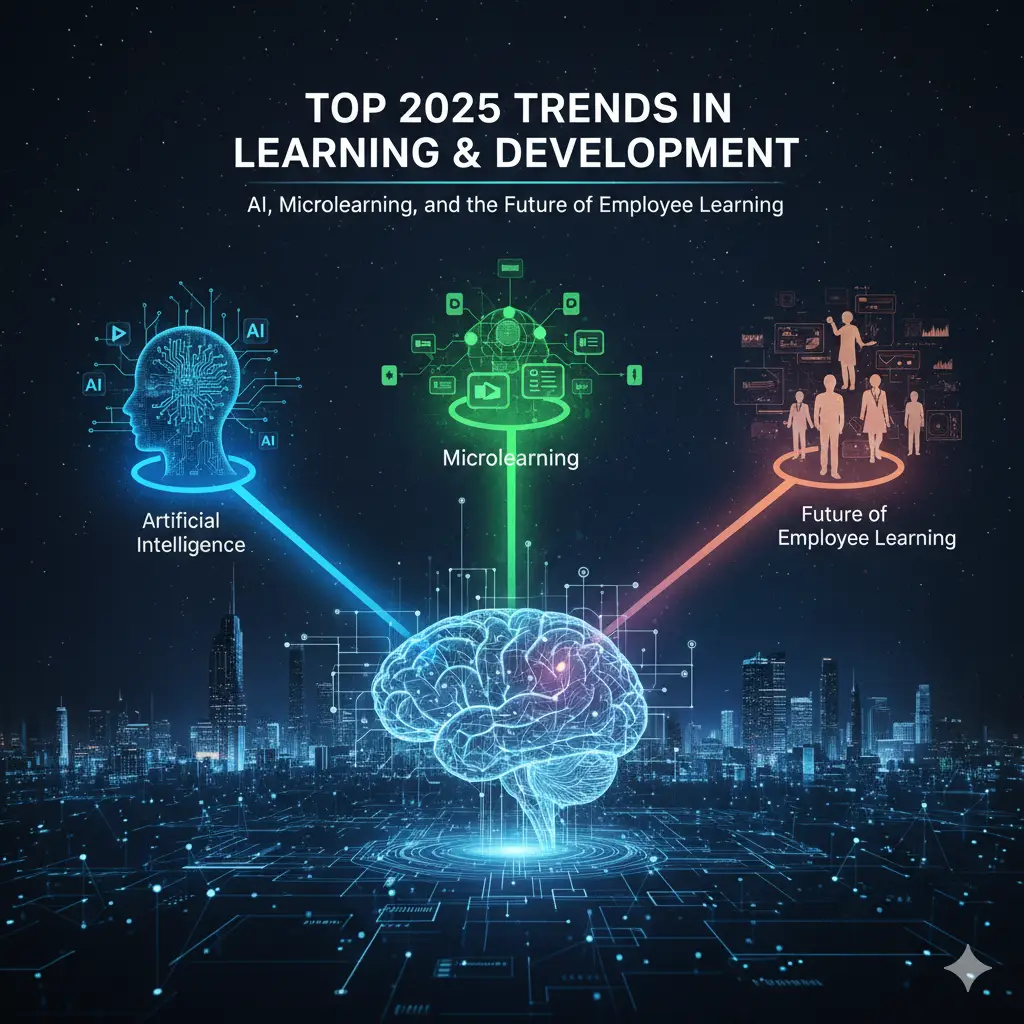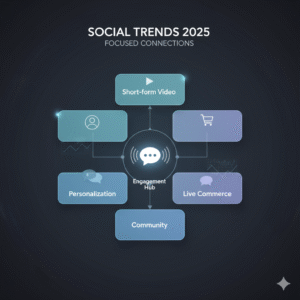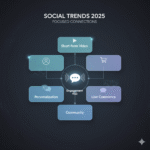Table of Contents
Introduction
In a rapidly evolving world—driven by remote work, technological advances, and changing workforce expectations—Learning & Development is no longer a “nice to have.” Companies that want to stay competitive are treating L&D as a strategic priority. Below are the top trends for 2025 that are reshaping how people learn at work, supported by recent data and examples.
Key L&D Trends to Watch
- AI-Driven Personalization & GenAI Tools
Personalized learning paths are moving from buzzword to baseline. Companies are using AI and machine learning to tailor content to each employee’s role, skill level, and career goals. This includes recommending learning modules, adapting courses in real time depending on performance, and even generating assessments or micro-learning modules automatically. eLearning Industry+2techinnov.ca+2 - Learning in the Flow of Work (LIFOW)
Rather than pulling employees away for formal training sessions, organizations are embedding learning directly into daily workflows using tools like Slack, Microsoft Teams, or custom platforms. This allows for “just-in-time” learning and helps make L&D less disruptive. skillscaravan.com+2Octivo+2 - Microlearning & Just-in-Time Training
Short, bite-sized learning experiences are becoming more dominant. These are especially valuable in a busy, hybrid or remote work environment. Whether it’s 5-10 minute lessons, quizzes, interactive infographics, or video content, micro-learning helps improve retention and helps learners apply knowledge right away. eLearning Industry+2HR Today+2 - Immersive Learning: AR / VR / XR
Augmented Reality, Virtual Reality, and Extended Reality are being adopted not just in experimentation but in more scale, for both soft skills and technical training. Simulating high-stakes or dangerous environments in VR, conducting role-plays, or safely practising rare tasks all help boost engagement and retention. eLearning Industry+2eLearning Industry+2 - Soft Skills & Human-Centered Learning
As automation and AI take over repetitive tasks, human skills like empathy, leadership, collaboration, communication, adaptability, and emotional intelligence are in greater demand. L&D is focusing more on developing these skills. eLearning Industry+2TalentLMS+2 - Skills-Based Talent Management & Reskilling/Upskilling
Organizations are shifting to skills-based learning rather than job‐title-based. They’re identifying gaps, forecasting future skill needs, and offering continuous training so employees can pivot as job requirements change. Upskilling becomes essential in a fast-changing market. TalentLMS+2Octivo+2 - Data Analytics & Learning Measurement
It’s not enough to deliver training; organizations want to measure impact. Which programs increase retention, performance, or reduce errors? Learning platforms are increasingly integrating dashboards, predictive analytics, and data-driven recommendations. Octivo+2Eubrics+2 - Human Touch & Emotional Well-Being
Alongside tech-driven learning, retention and employee satisfaction are linked to well-being, psychological safety, and “humanization” of learning experiences. Mentoring, peer-learning, coaching, and supportive environments are becoming more central to L&D programs. TalentLMS+2Beyond The Sky+2
Why These Trends Matter
- Better Learning Outcomes: Personalized, just-in-time training and immersive technologies lead to higher engagement and better retention.
- Agility & Adaptability: Organizations that invest in L&D can adapt more quickly to changes in the market or disruptions, because their workforce is more versatile.
- Employee Satisfaction & Retention: Learning opportunities are a strong factor in employee engagement. When people feel they are growing, they are more likely to stay.
- Business Impact: Tying L&D to business metrics (performance, productivity, innovation) shows that learning isn’t just a cost—it’s an essential investment.
How to Stay Ahead: Practical Tips
- Audit current learning programs to see what works and where there are gaps.
- Choose scalable tech: AI tools, adaptive learning platforms, AR/VR pilots.
- Experiment with microlearning—start small, measure engagement, then scale.
- Build a culture of continuous learning—strong leadership support, peer coaching, feedback loops.
- Measure & iterate: Use data not just for reporting but for continuous improvement of learning content.









